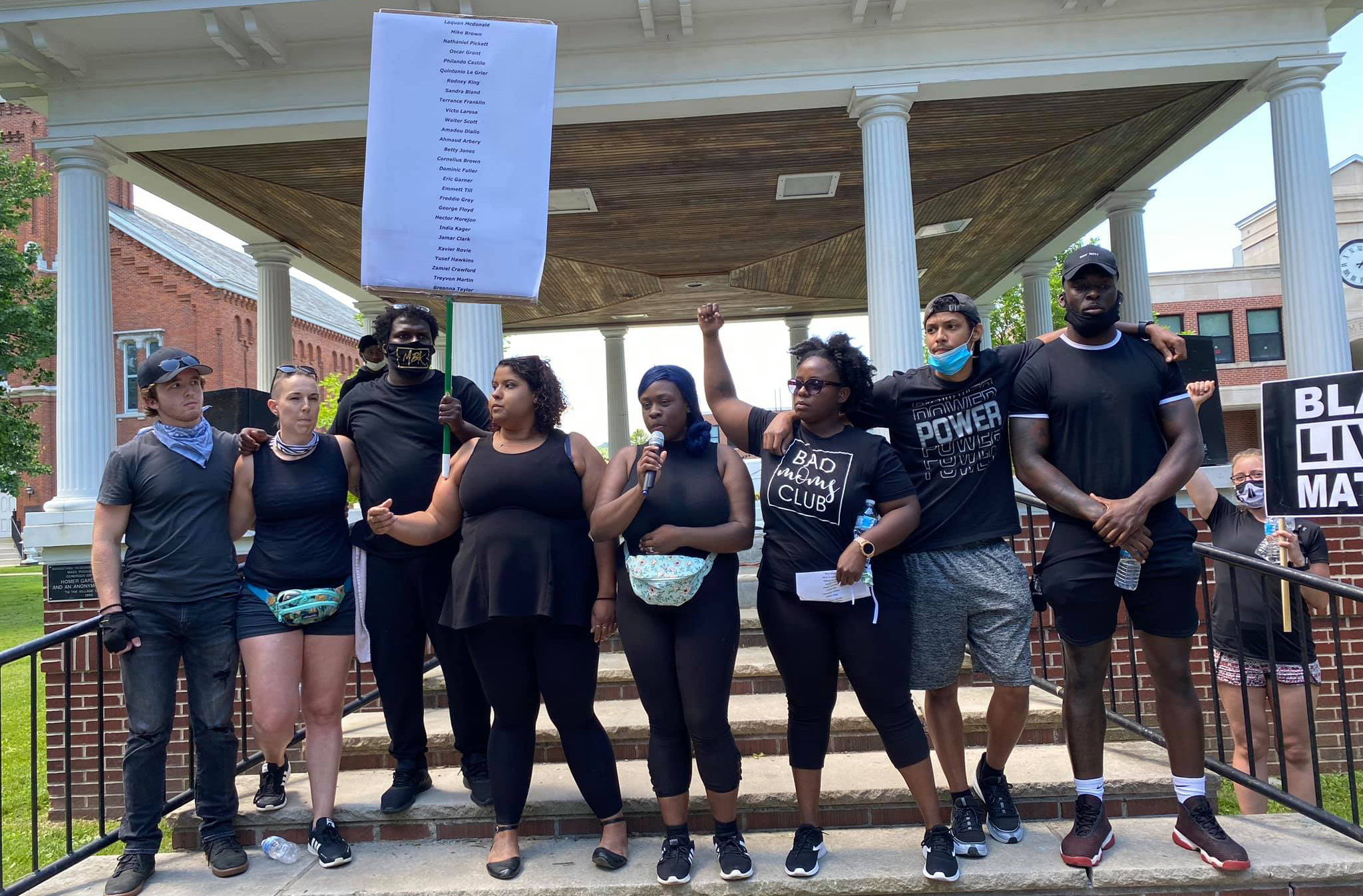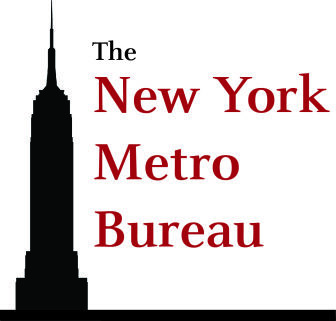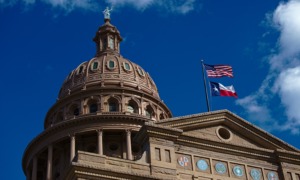
Courtesy of Black Lives Matter Cortland
Black Lives Matter Cortland organizers from left to right: Reed Cleland, Kristina Furi, Steve Williams, Apryl Beatty, Imani Ruffin, Melissa Kiser, Jordan Prior and Caleb Wright.
CORTLAND, N.Y. — Few people downtown would look Steve Williams in the eye.
Not the police officers stationed at each end of Courthouse Park. Not the two white families at his front and back, who called past him to greet each other.
Williams had come there not in support of the protest but as a critic, centered around one central question: How long would it take a stranger holding a Black Lives Matter sign to acknowledge Williams, a Black man?
“It’s lacking that passion. Y’all know that passion when you really mean something? No justice no peace,” he said, narrating on his livestream of the June 1 protest. “They don’t have that. Even now, see?”
He walked by a group of white protesters, shifting his camera as he passed them. “I can walk by. Ain’t nobody smiling at me, no ‘Hey, how you doing.’”
Weeks later, now one of six leaders of the Black Lives Matter movement here, Williams and co-organizer Melissa Kiser wonder how much their movement will change rural Cortland County, where 800 of the 48,300 residents are Black and 898 are two or more races.
That protest was a microcosm of Williams’ experience in rural and suburban America — the only Black teacher in several school districts in Cortland and the commonwealth of Virginia, one of a few Black protesters at the rally. Police officers taking pictures with protesters, while adhering to a use-of-force policy that allows chokeholds. Knowing that every acknowledgement on the street holds weight in the form of being seen, in social capital that he’s trying to provide his three children so they feel welcome in small-town America.
“As much as I appreciate our allies, it is complete bullshit to me until you take it from ‘Black Lives Matter,’ to ‘Hey, how you doin’, man?” Williams said.
Thirty-three miles north in Syracuse, N.Y., 13 advocacy groups, including CuseYouthBLM, sent nine demands to city hall as protesters vowed to march for 40 straight days. Downstate in New York City, Mayor Bill de Blasio has pushed to transfer over $1 billion from the New York Police Department budget to youth and community services, and in Binghamton, N.Y., protests surrounding an alleged history of abuse in the Broome County Jail have persisted, even as protestors were kept away from the county jail.
This energy has trickled into the villages and towns that make up Cortland County in protests that are mainly white, in ideas for reform that have been slowed down by legislative red tape, in what Kiser and Williams describe as well-intentioned measures that confuse symbolic gestures with substantial change.
Being strategic
“I think that people believe they’re making more leaps and bounds than they actually are,” Kiser said. “And we’re still in the baby step phase of things.”

They’re pushing for representation that would build a base of support they say Cortland lacks: Black teachers like Williams normalized in schools. A Black legislator at the county level or alderman at the city level. Funding for more than one community center or a full-fledged citizens review board. An end to the certificates of achievement in the annual police report recognizing the officers who record the most felony, misdemeanor, DWI and warrant arrests.
In 2019, the city of Cortland spent 20.1% of its budget on the police department and an additional 6.6% on police and fire department retirement funds. Slightly under 4.5% of the budget funds youth and recreation services. The county spent just over $11.73 million, or 8.2% of its 2020 adopted budget on the sheriff’s department, probation and the county jail.
Since the police killing of George Floyd in Minneapolis, both the Cortland County Sheriff’s Office and the city of Cortland’s police department have posted their use-of-force policies. Protest organizers have met with the police department and Mayor Brian Tobin regularly in the past month. Some officers and Tobin have marched with them at protests.
But so far, the policy reforms and proposals in Cortland stem from state capital Albany, most notably the repeal of 50-a, a provision that previously hid police disciplinary records from public view. By April 2021 each jurisdiction in New York will present its plan to reform police, part of an executive order from Gov. Andrew Cuomo that threatens to pull funding from police entities that don’t go far enough.
For now, Tobin said in an interview, “there are some things I’d like to see us do.” He now wants to expand his perspective, he said.
“I’m not going to come down with directives without listening to the people and hearing what other people’s thoughts are and where our opportunities for improvement are,” he said.
Until that happens, Kiser is strategically planning what, and how, to protest. She can’t organize a 40-day march. There are no local advocacy groups to file demands with. She is most comfortable behind the scenes, picking those who have bargaining power and pushing them past their comfort zone.
To paint or not to paint
June 16 was no different. The 10th item on the city’s virtual Common Council meeting was “discussing next steps to support a conversation on diversity and inclusion.” After 40 minutes of debate about whether to paint Black Lives Matter on a city street, Kiser said, “I don’t want to hear all of the red tape. I don’t want to hear all of the griping. I want to hear some solution-based incentives on how it can be done in a way that includes the people of color in your community, and in a way that you stand with the people of color in the community to get this one thing done.”
Alderman Bruce Tytler responded.
“I would support Black Lives Matter on Main Street or Court Street,” he said. “And then maybe we should get in touch with the mayor [about what] it’s going to look like. Let’s just do it.”
The council delayed discussing police reform for two weeks.
Tobin sees his role as changing since the police killing of George Floyd. What new policy reforms should come to the city of Cortland? He’s confident that the state will accept the city’s plan for improved police next April, but now he was focused on feeling out public opinion on police. “I want to hear from the people,” he said in an interview in mid-June.
Victories in the form of paintings and meetings — “wonderful overtures”— come with a sense of frustration, Kiser said. It comes when she receives threats from white supremacists but often keeps quiet, so it doesn’t halt the momentum she’s gained. It comes when — after hours of planning peaceful protest in the village of Homer, N.Y., with a heavy police presence — the village posts instructions on Facebook for residents who don’t plan to attend: “If there are any issues or problems during this event, we ask that residents call 9-1-1 immediately.”
The big picture goal remains the same as in New York City, Syracuse and Minneapolis: not just police reform, Williams said, but ending systemic racism as a whole.
But their impact here centers around one central question, the reason Williams went to his first protest as a skeptic rather than a supporter. Will this movement spur gestures or change?
“We don’t have any [Black] people in positions of authority or power in our own neighborhood,” he said.
“Not yet,” said Kiser.
“Not yet,” he repeated.






























